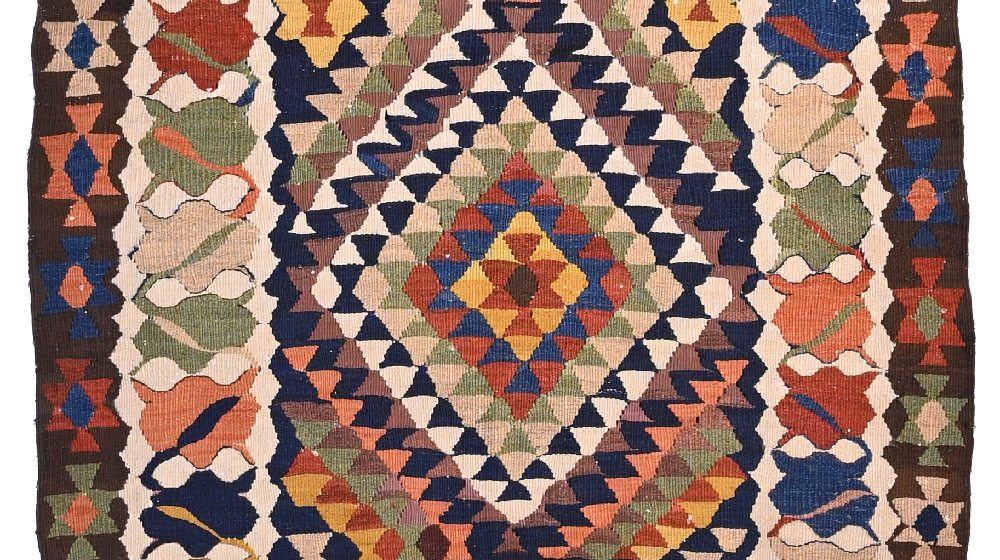Your Cart is Empty
2 min read
An old kilim from Kurdistan.
Circa 1920s
Kurdish weavers produce extremely fine flat-weaves. These kilims are amazingly beautiful due to the designs, mastery of the weavers and the quality materials used. Kurds are mountain people, and they are so known since the early empires of Mesopotamia. Their primary production has historically been wool. They herd their sheep in cool highland pastures. Therefore the yarn that they produce is of extraordinary quality. The oily nature of the thread creates a lust similar to silk, and the thick coat results in very long fool fibre that makes a long-lasting and robust yarn. Most importantly, the Kurdish ladies are masters of hand carding and hand spinning the raw wool into yarn with fantastic quality that gives their kilims and rugs an amazing texture and look. Using natural dyes further enhances the beauty of the older kilims like yours.
Although the superiority of the workmanship, texture, finishing and colours makes this kilim one of the most remarkable, the design represents a different dimension. Many such kilims reflect archetypical symbols guarded and passed on from generation to generation.
The main design of the rug consists of a mesmerising arrangement of triangles. The interpenetrating equilateral triangles have existed in the eastern and western cultures for thousands of years;
"The triangle is a symbol of the triune nature of the universe: Heaven, Earth, Man; father, mother, child; man as body, soul and spirit; mystical number three; three, the first flat figures. Hence the symbol of the surface in general. The surface consists of triangles" (Plato).
Plato wasn't the first to interpret the symbol. Triangle has been used in various forms in architecture and artefacts in different parts of the world; the most well-known examples are the Yantras of Buddhists and the Star of David. In most cultures opposing triangles represent two balancing elements like male and female or spirit and body that point to the archetype of the "self" and a complete form.
Aside from the field of triangles, this kilim's border is impressive and unique. I do not remember seeing a design like this in any other zillions of rugs I have seen. The border of this kilim makes it a most exciting piece and puts it among the kind of nomadic weaves that are creations of powerful minds that have managed to "conceive" a very original pattern. If you inspect the border elements, you will notice no repeats, each one of a kind in shape and colour.
The forms seem like tulips to me, and perhaps there is a meaning and a coded message that the weaver has playfully woven into colours. That wouldn't surprise me, as the Kurds are brought up with mysticism and Sufism.
Maybe I am wrong and will never be able to provide an accurate exegesis for the pattern, but the mystery makes this kilim more interesting. I am sure it will make you think and wonder for a long time and for sure would intrigue you to have a look at the history of the people whose history goes back to Medes, 7th century BC.

